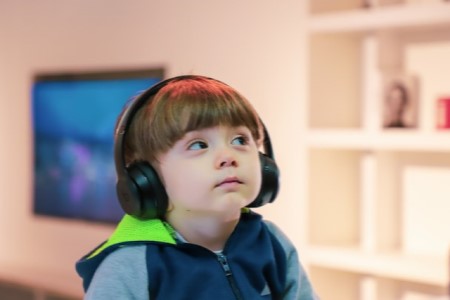In studying children with developmental difficulties, such as deafness, language impairment, dyslexia, and so on, psychologists have tried to understand the nature of these problems and to suggest appropriate methods for remediation and intervention (Bancroft, 1995).
In the recent years such investigation (particularly in the area of intellectual impairment) increasingly involves understanding how developmental processes in children with impairments, differ from those of children without impairments (Faulkner and Lewis, 1995). This so-called psychological or developmental approach, apparently involves comparisons with typical children, and therefore is likely to enhance understanding of normal development.
This essay will attempt to show how this may be the case, with respect to language impairment, dyslexia, deafness and attachment problems.
In the area of language impairment (lower than normal verbal ability), it has been suggested that children with difficulty or delay in language development, are at risk when they start learning how to read, write and spell (Bancroft, 1995).
This implies a continuity between language development and literacy (explored by Oakhill, 1995), the latter being defined as the ability of spoken language in addition to reading and writing (Garton and Pratt, 1989 in Bancroft, 1995).
Research into this area has employed various strategies. One of the most effective has been the longitudinal approach, which involves following the development of the same group children, who have been identified as late or aberrant talkers, in the course of becoming literate (Bancroft, 1995).
A very representative study of this kind by Bishop and Adams (1990) has proposed two particularly important conclusions. First, children who experience early language difficulties are at risk of having continuing problems in the comprehension of spoken language and associated problems in reading and spelling (e.g. making phonological errors regarding the sounds of words). Second, children who overcome their early language difficulties make progress equal to that of the normally developing children.
This research has important implications for intervention, as it suggests that recovery, and maybe remediation, can result in apparently normal development (Bancroft, 1995). At the same time, it indicates specific aspects of language (comprehension and expression of spoken language) that predict later development, which seems to be a significant contribution to the study of normal development, particularly when acknowledging the potential impact of literacy in cognitive development and thinking (Oakhill, 1995 in Bancroft, 1995).
Another area of literacy difficulties is developmental dyslexia –a particular difficulty in learning to read and spell– which for some is an identifiable condition, while for others ‘dyslexic’ children are not a special group, but part of the continuum of all readers. The debate is still unresolved, as each position is supported by some research evidence, and neither is ruled out (Bancroft, 1995).
Nonetheless, research into this area has led to the development of techniques which could support all children (‘dyslexic’ or not) in the process of becoming literate. Besides, the acknowledgement that some children’s difficulty in developing literacy skills has no known explanation, involved psychologists in the process of elucidating the reading and spelling strategies employed by poor as well as by normal readers (Bancroft, 1995).
As a result, the overall process of reading development was clarified, areas of difficulty were identified, and means of assisting children in developing literacy skills were introduced.
An example of advance in clarifying the usual course of reading development, is Frith’s (1985) model which suggests a progression from recognizing specific words as complete entities (logographic stage), to the ability of recognizing the component sounds of words (alphabetic stage) and finally to the ability of rapid recognition (orthographic strategy of mature readers).
Regarding difficulties in learning to read, Ellis (1984) identified the factor of non-transparent (non-close) relationship between the sounds of words and the sounds of their component letters. As some languages are more ‘transparent’ than others (e.g. Italian as compared to English), we may acknowledge that part of children’s difficulties in learning to read and spell, lie with the particular language involved (Bancroft, 1995).
It’s worth noting that early investigators considered reading difficulty as a medical condition (as opposed to psychological) of genetic origins, but are due some credit for indicating some features of poor readers, such as ‘word blindness’ (Hinshelwood, 1917) and inability to preserve the order of letters (Orton, 1937).
More recent research (Rutter and Yule’s Isle of Wight study, 1975) suggested a relationship between reading/spelling skills and intellectual ability, which gave grounds to an operational definition of ‘backward readers’ as children whose reading or spelling performance is two years less than what would be expected by their average (or above) intellectual ability measured by a formal test. Yet this definition does not specify any cause.
Such lack of specificity in terms of cause and consequence, is a particular problem in the investigation of dyslexia. For instance, studies that aimed to identify possible deficits underlying reading difficulties, such as memory problems (e.g. Holmes and McKeever, 1979 in Bancroft, 1995), failed to do so, because their strategy of comparing groups of poor and normal readers matched by chronological age (as opposed to reading age), involved the possibility that an apparent deficit in memorizing words could be a consequence of poor reading, rather than the cause of it.
However, by comparing groups matched by reading age, Bryant and Bradley (1978) found that backward readers were relatively insensitive to sound, which was probably a cause of their reading problem rather its consequence, since both groups were at the same reading level.
This idea was clarified in their longitudinal study (1985) which followed the progress of a sample of children from the time that they could not yet read. The findings showed that early sensitivity to rhyme and alliteration was strongly related to later reading performance.

Bryant and Bradley (1978) reasoned that the ability to perceive rhyme contributes to an awareness of sound similarities and differences, which in turn, contributes to the process of learning to read and spell. On this basis, they suggested that early experience of sounds through games like rhyming, may significantly contribute to subsequent reading development.
Many researchers have confirmed the value of being sensitive to sounds (e.g. Goswamin, 1986), and the advantage of early practice (e.g. Goldstein, 1976; Snowling, 1987) for later reading development.
Bryant and Bradley’s (1985) longitudinal study also clarified that poor memory is not a cause of reading/spelling difficulties, and indicated that reading practice promotes some aspects of memory.
Deafness is another area of investigation, which contributes to the understanding of psychological processes in general.
Deaf people attract psychologists’ attention because they constitute a unique group who probably experience and understand the world in a totally different way, as they cannot hear. Besides, they communicate through sign language, which is usually inaccessible to hearing people (Gregory, 1995).
For a long time, deaf people were considered as linguistically deficient (manifested by poor competence in oral language) and therefore, a natural experimental group for testing the impact of language on cognition and thought (Furth, 1971 in Gregory, 1995). For instance, Furth (1966) used this approach to examine whether Piagetian concepts were influenced by children’s language.
While these studies disregarded sign language skills, recent thought considers that studying the acquisition of sign language may elucidate the study of language development, for instance, regarding the possible existence of a consistent pattern of language development common to all languages (e.g. babbling; first word or sign; syntax development etc.) and the link between pre-linguistic and linguistic communication (Gregory, 1995).
Sign language may also be useful in examining the relationship between gesture and sign (or word), because gestures often become signs and it’s important to recognize this development’s continuities/discontinuities (Gregory, 1995).
Psychological studies of deaf people have also been employed in order to examine the impact of hearing deficiency in the development of language, cognition and personality.
However, rather than viewing deaf people as having a deficiency in hearing or language, we might consider them as people who process and understand the world in a different way than hearing people.
By way of illustration, research has indicated that deaf children are better than hearing children, in facial recognition under different spatial orientations (Bellugi et al., 1990 in Gregory, 1995) and in elaborating the spatial analysis of dynamic displays of characters (Fok and Bellugi, 1986 in Gregory, 1995).
Besides, deaf people use sign language, which we might consider in terms of its strengths within deaf people’s world, rather than in terms of its linguistic status against that of oral languages. We could, for example, appreciate that sign language responds to the needs of deaf communities, just as spoken language responds to the needs of hearing communities, so neither is superior to the other (Lane, 1992 in Gregory, 1995).
Moreover, we may consider deaf children as comprehending the world in terms of the information they receive, rather than in terms of the lack of information or misinterpretation. Under this reasoning, a deaf child’s belief that s/he will later become hearing is justified since s/he might have never encountered deaf adults. Also, in interactions with others, deaf children’s mistakes in hearing what is said, may illustrate strategies of coping with the particular situation. For instance, a very common strategy is giving a colour name in response to an incomprehensible question. The extent of using such a response may indicate how frequently it is found to be appropriate or acceptable (Gregory, 1995).
From what we’ve discussed, it seems that studying deafness, either as a deficiency or as a difference, may have an important contribution to the general understanding of psychological processes.
As a final point in our discussion we shall consider the area of attachment.
In studying the development of secure and insecure attachments, psychologists have been able to clarify some elements of children’s relationships that have short-term or long-term effects, and how the psychological being experiences the effects (Cowie, 1995).
While Bowlby’s (1960s) maternal deprivation hypothesis stressed the significance of a bonding relationship with a primary caregiver who provides continuous love and care within the critical period from 6 months to 3 years of age, for the child’s emotional and social development, subsequent research explored the impact of a wide range of other factors.
Ainsworth (Ainsworth, 1985; Ainsworth and Bell, 1974; Ainsworth et al., 1978) emphasized the significance of the parent as a secure basis for the child, and indicated that effective parenting involves sensitivity and responsiveness to the child’s needs. In her argument, such parental qualities facilitate the child’s security of attachment, which in turn forms the basis for the child’s feelings of self-worth and self-confidence.
Other research indicated the role of wider family (fathers, siblings, grandparents) and professional caregivers for the development of children’s attachment security which facilitates the subsequent emotional and social development (Cowie, 1995).
Besides, Belsky (1984) proposed that the quality of parent-child relationships is influenced by factors of the wider social context within which these relationships occur, e.g. the parent’s mental health, economic and employment conditions, the degree of support from the immediate social environment (mate, friends, relatives) and the child’s temperament.
He also mentioned the importance of the parent’s internal working model of relationships –a term introduced by Bowlby (1969) which refers to mental representations, based on the person’s early interactions with their primary caregiver and the associated emotional experiences and expectations.
Ainsworth suggested that secure attachments with primary caregivers help the child to develop an internal working model of their caregivers and others as available and responsive, while insecure attachments do the opposite. Through this process, she argued, children construct their expectations of the quality of their relationships with other people.
On balance, these arguments suggest that the quality of early relationships may have longer-term consequences for the child’s self-concept and for social relationships in adulthood.
Main and Goldwyn (1984) have even argued that the mother’s personal experiences regarding her quality of attachment to her mother may predict the quality of her relationship with her own child, which links back to Belsky’s (1984) account.
Although most of the assertions we’ve presented have received much criticism, it seems that the study of attachment problems has offered a lot of insight into the processes of emotional and social development in childhood. Besides, it has suggested some central aspects of emotional strength and of the ability to deal with the adversities of social life, such as self-esteem, self-worth, sense of security, loving and being loved (Cowie, 1995).
In summary, this essay has indicated some of the ways in which the study of developmental difficulties has promoted understanding of the processes involved in the usual course of development.
Despite methodological weaknesses and lack of specificity in establishing the cause and effect, we saw how the study of language impairment and dyslexia has produced insight into the relationship between language development and literacy skills, and into how early sensitivity (or insensitivity) to sounds may contribute (or otherwise) to reading development.
We also explored how deafness may be used for testing the influence of language in cognition and thought, and how studying the acquisition of sign language may be relevant to the study of language development.
Besides, we saw how studying deaf people may help us appreciate a different way of experiencing and understanding the world, than that of hearing people.
Finally, we reviewed how the study of attachment problems has offered suggestions about specific aspects of young children’s experiences that may predict later emotional and social development.
Terms and Conditions for Republishing Content
Article Author: Panagiota Kypraiou MSc Health Psychology, MBPsS - Body & Gestalt Psychotherapist (ECP) - Body Psychotherapy Supervisor - Parents' Education Groups Coordinator https://www.psychotherapeia.net.gr
References
Bancroft, D. (1995) ‘Language impairment and dyslexia’ in Bancroft, D. and Carr, R. (ed.) Influencing Children’s Development, Oxford, Blackwell/The Open University.
Cowie, H. (1995) ‘Child care and attachment’ in Barnes, P. (ed.) Personal, Social and Emotional Development of Children, Oxford, Blackwell/The Open University.
Faulkner, D. and Lewis, V. (1995) ‘Psychological intervention: Down’s syndrome and autism’ in Bancroft, D. and Carr, R. (ed.) Influencing Children’s Development, Oxford, Blackwell/The Open University.
Gregory, S. (1995) ‘Psychology and Deafness’ in Bancroft, D. and Carr, R. (ed.) Influencing Children’s Development, Oxford, Blackwell/The Open University.





